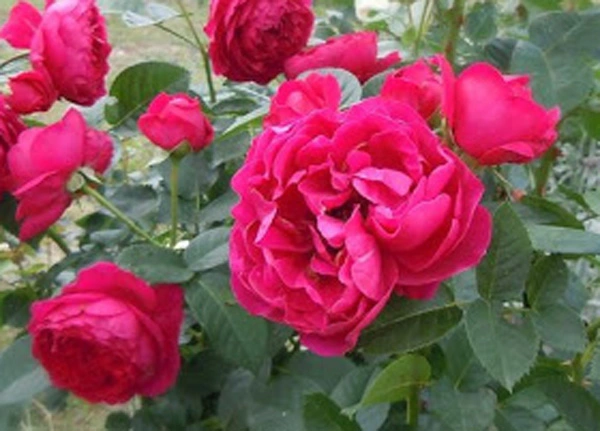Roses – flowers with almost the largest range of species. They are classified into different groups: climbing, floribunda, park, and so on. The most common – tea-hybrid group.
These include Ascot. This variety is also classified as a classic park roses (for unpretentiousness).
The variety was bred in Germany and belongs to Tantau.
In a few years, the novelty managed to captivate rose lovers with its durability and at the same time incredible beauty of the flower. Raspberry or purple-red spherical cup-shaped flowers (10-12 cm in diameter) somewhat resemble a peony. They have a distinct, but at the same time light rose aroma. Petals with satin texture.
Rose bushes are compact, 90-185 cm (depending on the region) in height, 45 cm wide. The flowers grow singly or three on a branch, sometimes more. Flowering begins in June, blooms profusely with breaks until October, until the first frosts.
Gardeners note the generosity of the variety.
The bud opens gradually. Does not fade for up to two weeks, sometimes longer. The bouquet weighs up to ten days.
Grown in flower beds or in containers. Ascot loves lots of sun and fertile, fertilized soil. Therefore, plant it in appropriate places: in the sun or in partial shade. But it should be borne in mind that the direct scorching rays of the sun petals are afraid.
Therefore, in temperate climates it is better to plant in the sun, in the south – in partial shade. Roses do not like excessively moist soil, so you should avoid places with high groundwater levels.
If you plant the plant in the spring, prepare the holes for the bushes in the fall, and for the autumn planting – in the spring. Spring seedlings begin to bloom by autumn. But experienced gardeners are advised to prune the buds to allow the plant to take root well, to adapt.
Roses should be planted at a distance of 30 cm from each other, rows – 90 cm.
Water is poured into the pits 40x40x40 cm. When it enters the ground, a mixture of humus and soil is poured on the bottom.
Put the seedling, sprinkle with earth, water, and mulch the holes with peat or humus.
The rose should be fed and watered regularly (but do not overdo it). Weak shoots and wild rootstock are removed.
Ascot is resistant to pests and diseases. But in unfavorable years it is necessary to carry out prevention against powdery mildew and black spot.
In order for the bush to be beautiful and bloom profusely, you should prune the faded buds in time.
In winter, the bushes are covered (withstands up to 20-23 degrees below zero without shelter). Before that, all the leaves and flowers are removed, covered with earth, and the top is covered with leaves or spruce branches.

